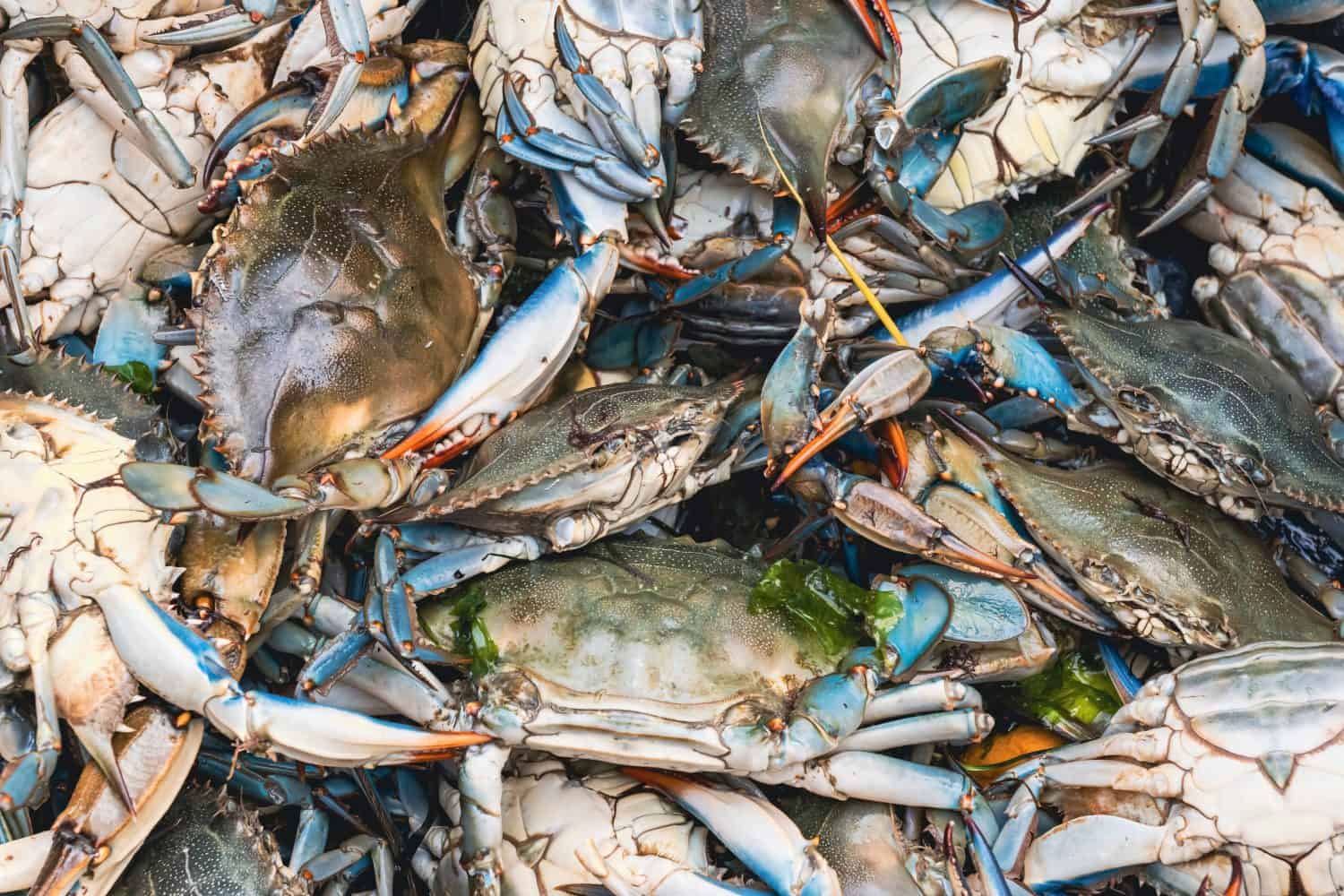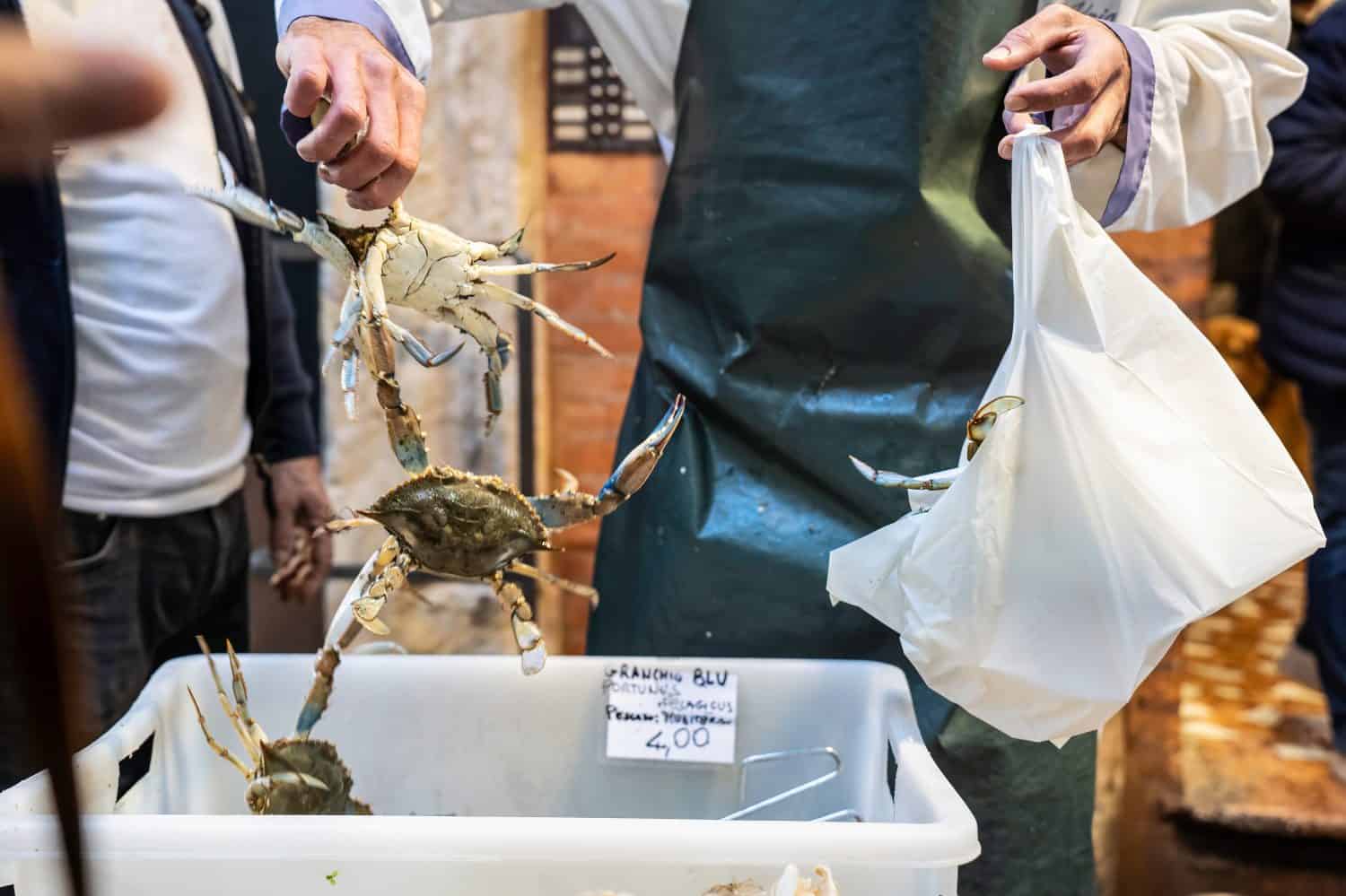Crabbing is a wonderful pastime that people have been engaging in for decades. It’s simple and straightforward, people of all ages can participate, and it has a low barrier to entry. This means that both experienced fishermen and amateurs alike can enjoy partaking in this activity. However, as time passes by, the rules and regulations surrounding this hobby have transformed. In fact, sometimes the guidelines can vary from one season to another. Because of this, it is more important than ever for fishermen to be aware of the rules surrounding this hobby before they head out and start crabbing. Let’s explore when crabbing season starts in the state of South Carolina and discuss daily bag limits and other important rules.
When Does Crabbing Season Start in South Carolina?

Some people say that blue crabs harvested throughout their peak season are sweeter and larger.
©Marco Lissoni/Shutterstock.com
Luckily, the crabbing season in South Carolina lasts all year long. This means that trappers can set out during any month of the year to harvest crabs of any kind. However, crabs will be at their peak from the early summer to early fall. Many states require that trappers obtain a license to begin catching crabs, and South Carolina is no exception. Prices range between $25 and $100 for residents depending on the type of crabbing the individual plans on engaging in. For example, recreational trappers will only pay $25, while those wholesaling seafood must pay $100 for a license. Anyone caught engaging in this activity without a license may face consequences ranging from fines to equipment confiscation.
Crabbing Bag Limits in South Carolina
South Carolina is home to several different species of crab. The blue land crab, the stone crab, the Atlantic blue crab, the fiddler crab, and the Atlantic sand fiddler are just a few locals can find in this state. Among these, the Atlantic blue crab is undeniably the most popular, and many trappers seek them in particular. However, fishermen must adhere to daily bag limits in order to stay in compliance with state guidelines. Trappers may only take Atlantic blue crabs larger than five inches in size, any smaller than this must be rereleased. In addition, any egg-bearing females must be released immediately as well regardless of size. This practice helps sustain crab populations and anyone caught ignoring this rule may face serious repercussions.
Harvesting whole stone crabs is never permissible. Trappers are only able to take one claw per stone crab which must be 2 3/4-inch or larger. If fishermen encounter stone crabs with one claw only, they must rerelease the crab untouched. Similar to Atlantic blue crabs, female egg-bearing stone crabs must be released immediately upon capture. Daily bag limits for other crab species native to South Carolina are unclear. These bag limits are put in place to ensure that crab populations throughout South Carolina stay stable. While it might be frustrating for some, this practice helps guarantee crabbers can enjoy this hobby for years to come. For more information about state regulations regarding the capture of shellfish, you can visit eRegulations.
Things to Keep in Mind While Crabbing in South Carolina

As long as you follow state guidelines before heading out to crab, you have nothing to worry about.
©Davide Zanin Photography/Shutterstock.com
In addition to obtaining a license and staying in compliance with daily bag and size limits, trappers must adhere to other guidelines regarding this activity as well. For example, trappers are able to use up to 50 crab pots per standard $25 license. Any additional crab pot will cost $1 more. In addition, all traps and equipment must meet certain standards. Traps must have the identifying information of the individual who holds the license clearly displayed. According to the South Carolina Department of Natural Resources Marine Resources Division, “The buoy of traps used by individuals for personal use as provided by law in lieu of the identification number required on commercial traps must bear the owner’s name and current address and must be yellow in color.”
In addition, traps must be placed in specific designated areas and must not interfere with boat ramps. Traps that do not display any personal identifying information or traps that have been left in the water unattended for longer than five days may be subject to confiscation. It is important to note that rules may differ for non-resident licenses. For more information about specific rules surrounding crab traps, you can read more on the South Carolina Department of Natural Resources Marine Resources Division’s website.
Before You Head Out and Start Crabbing…
Although it’s easy to get swept up in all the excitement, it’s important to do your homework before you head out and start crabbing this season. While following the rules set by the South Carolina Department of Natural Resources might seem tedious or overwhelming, keep in mind that these regulations help maintain balance in the ecosystem. If you have any questions or concerns not answered by information available online, don’t hesitate to reach out to the local wildlife authority for more details about crabbing in South Carolina.
Thank you for reading! Have some feedback for us? Contact the AZ Animals editorial team.







